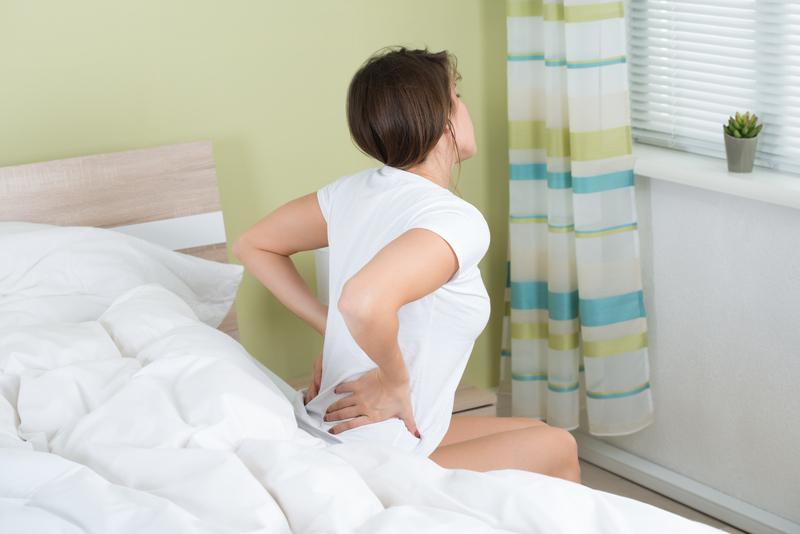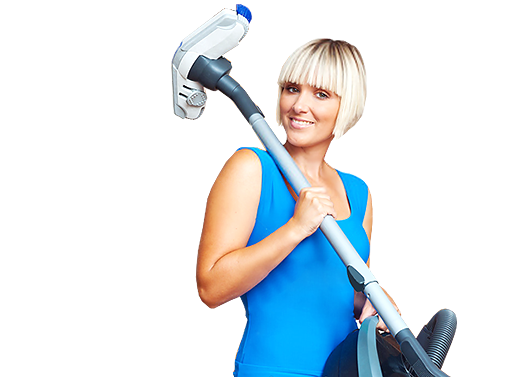Simple Steps to a Fresh, Mold-Free Bathroom Experience
Posted on 17/08/2025
Simple Steps to a Fresh, Mold-Free Bathroom Experience
Do you ever step into your bathroom and notice a musty smell, or perhaps spot black specks around the tiles, sink, or beneath the toilet? These can be telltale signs that mold and mildew are taking hold in your sanctuary. Achieving a fresh, mold-free bathroom experience is not just about aesthetics; it's also about maintaining your health and your home's value. In this comprehensive guide, you'll find actionable, science-backed steps to ensure your bathroom stays clean, inviting, and free of mold all year round.
Why a Mold-Free Bathroom Matters
Mold is more than just an unsightly nuisance. It can cause a variety of health issues, particularly for those with allergies, asthma, or weakened immune systems. The bathroom, with its frequent moisture and humidity, is especially susceptible to mold growth. That's why taking steps to prevent bathroom mold is one of the best things you can do for a healthier home--and family.
- Improve indoor air quality: Preventing mold means less chance of airborne spores.
- Safeguard your home: Mold can damage drywall, wood, grout, and paint if left unchecked.
- Enhance your comfort: A truly fresh, modern bathroom makes your routines more enjoyable.

Step 1: Ensure Proper Bathroom Ventilation
The Role of Airflow in a Mold-Free Bathroom
Poor ventilation is the most common cause of bathroom mold growth. Without adequate airflow, moisture lingers and creates an ideal breeding ground for mold spores. Follow these simple strategies to promote optimal ventilation:
- Install or Upgrade Your Bathroom Fan: Choose a fan with the right capacity for your bathroom's size (measured in CFM - cubic feet per minute). Make sure it vents to the outdoors, not into the attic.
- Run the Fan Correctly: Always turn on the fan for at least 20-30 minutes after a shower or bath to help exhaust excess humidity.
- Open Windows and Doors: If your bathroom has a window, open it for natural ventilation. Crack the door ajar to allow fresh air to flow in, especially after bathing.
- Use a Dehumidifier: For bathrooms prone to dampness, a compact dehumidifier can help keep humidity below the mold-friendly threshold (around 45%).
Tip: Consider installing a timer or humidity-sensor on your bathroom fan for automatic moisture control.
Step 2: Regular Cleaning and Upkeep
Cleanliness is Key to a Mold-Free Bathroom
Mold thrives on soap scum, body oils, and organic matter left behind on bathroom surfaces. A consistent cleaning routine is crucial to not only remove existing mold but also prevent it from returning. Here's how:
- Wipe Down Wet Surfaces: Use a squeegee or microfiber cloth to dry shower walls, doors, and tub edges after every use.
- Scrub Grout and Tile Weekly: Focus on corners and crevices where water may linger. Use a mildew-resistant bathroom cleaner or a homemade mix of vinegar and baking soda.
- Wash Bathroom Mats and Curtains: Fabric items can harbor moisture and spores. Launder them regularly and allow them to dry thoroughly.
- Disinfect Frequently Touched Items: Clean faucets, toilet handles, and light switches, as mold spores can settle anywhere moisture is present.
Remember: Keeping surfaces dry and clean can go a long way in supporting a continuously fresh bathroom environment.
Step 3: Address Leaks and Water Intrusion Immediately
Stop Mold at Its Source: Moisture
The root of almost every bathroom mold problem is unwanted water. Even minor leaks from pipes, faucets, or shower seals can create enough moisture to fuel mold growth. Here's what you should do:
- Inspect for Leaks Regularly: Check under the sink, around the toilet base, and behind the shower curtain for any pools or drips.
- Repair Damaged Caulk or Grout: If you spot cracked or missing sealant along tiles, re-caulk promptly to block water seepage.
- Monitor Water Stains: Discoloration on ceilings or walls can signal hidden leaks. Investigate and repair immediately--often the problem is bigger than it appears.
- Upgrade Fixtures: If possible, install water-efficient fixtures to reduce overall humidity. Consider replacing old or leaky toilets, faucets, and showerheads.
If you find mold due to a leak, fix the leak first. Then, clean and disinfect the affected area thoroughly!
Step 4: Choose Mold-Resistant Materials
Smart Material Choices for Mold Prevention
The right building materials make it much harder for mold to gain a foothold in your bathroom. When renovating or updating, opt for mold-resistant options:
- Mold-Resistant Drywall: Also called greenboard, this drywall is designed specifically for damp spaces like bathrooms.
- Waterproof Paint: Apply a high-quality, mildew-resistant paint to walls and ceilings.
- Non-Porous Tiles and Stone: Ceramic, porcelain, or sealed natural stone are poor environments for mold, compared to unsealed grout or wood.
- Vinyl or Mold-Resistant Flooring: Avoid carpet and choose impermeable surfaces that are easy to clean and dry.
Small upgrades, like installing a splash guard on your sink or applying silicone sealant, can also help maintain a bathroom that stays fresh and mold-free for years to come.
Step 5: Cultivate Healthy Bathroom Habits
Daily and Weekly Routines That Prevent Mold
Sometimes the easiest way to achieve a mold-free bathroom experience is by adopting consistent, proactive habits. Integrate these daily and weekly tasks into your routine:
- Hang Towels to Dry: Instead of leaving them in a pile, spread towels out to air dry immediately after use.
- Leave the Shower Door or Curtain Open: This allows trapped steam to escape.
- Store Toiletries Wisely: Don't nestle bottles and sponges close together--proper spacing allows air to circulate and surfaces to dry.
- Quick Daily Wipe-Down: Spend a minute each day wiping off the countertop, sink, and shower fixtures.
- Weekly Deep Clean: Set a schedule to thoroughly clean areas like the toilet, bath, tiles, and mirrors at least once a week.
Pro Tip: Keeping a squeegee in the shower encourages quick, daily maintenance and greatly reduces long-term mold risks.
Step 6: Spot and Remove Mold Quickly
What To Do When You Notice Mold
Despite your best efforts, sometimes mold can still appear. Early intervention is critical for keeping your bathroom freshness intact:
- Wear Protective Gear: Gloves, a mask, and eye protection can shield you from irritants and spores.
- Prepare a Mold-Fighting Solution:
- Mix one cup of bleach with a gallon of water for non-porous surfaces. (Never mix bleach and ammonia!)
- Alternatively, use undiluted white vinegar for a natural approach.
- Scrub the Affected Area: Use a stiff-bristle brush to work the cleaning agent into grout, tile, or other hard surfaces.
- Rinse and Dry Thoroughly: Mold can return if any moisture remains!
- Dispose of Contaminated Materials: Items like old shower curtains or caulk may need to be replaced to fully eliminate spores.
If the area is larger than 10 square feet, or if mold keeps coming back, consider calling a professional mold remediation service to ensure your bathroom is truly safe.

Additional Tips for Sustained Freshness and a Mold-Free Bathroom
While the steps above will go a long way, here are a few final strategies to enjoy a truly fresh bathroom every day:
- Keep Indoor Plants in Check: Some houseplants can increase humidity and encourage mold, so use them sparingly.
- Use Moisture-Absorbing Products: Desiccant packs or specialized gels can help pull excess moisture from the air.
- Check Air Registers and Vents: Ensure they're clean and unobstructed for the best airflow.
- Leave Cabinet Doors Open Occasionally: Especially after a deep clean--this helps surfaces dry fully.
- Replace Old Caulk or Sealant: Fresh sealant makes it harder for water to penetrate and feed mold.
Conclusion: Embrace the Fresh Bathroom Lifestyle
Maintaining a mold-free bathroom is absolutely achievable with a little dedication and the right approach. By focusing on moisture control, regular cleaning, wise material choices, and consistent habits, you'll protect your health, your home's structure, and your peace of mind. Take these simple steps today, and your bathroom will be a fresh, inviting retreat--every time you step inside.
Ready for your next shower? Step into the ultimate fresh, mold-free bathroom experience--because you deserve it!




